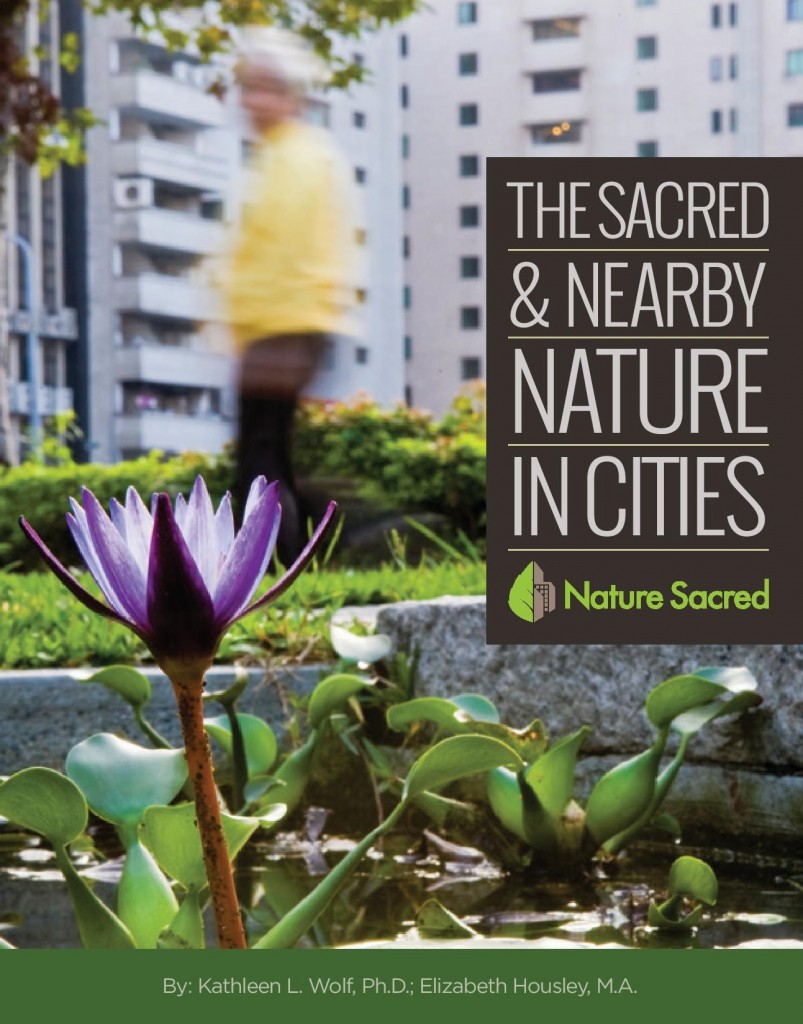We are approaching nearly 40 years of research about the linkages between nature experiences and human disease prevention and health promotion. Outdoor spaces that offer sanctuary and support relaxation and reflection provide mental and physical health benefits. When we commit to protecting and conserving our nearby nature spaces, we ultimately protect and heal ourselves.
If people have a desire for heightened experiences, just like a need for food or water, why not begin to understand how?
—Integrative Health Physician

In many communities research and scientific evidence are used to support policy and programs, and secure budget resources. Numerous scientific studies reveal the benefits and importance of restful, mindful time in nature. This information can aid public space advocates in making the case for having “Open Spaces Sacred Spaces” in their communities.
Importance of Nature Encounters
Everyday interactions with nature within one’s community sets up positive emotional responses. Technology advancements have allowed researchers to use portable EEG recordings, i.e. a laptop in a backpack connected to a walker’s brain activity. These studies show evidence of lower “frustration” brain activity when in green space, versus when moving within retail and commercial areas having no trees.
Several nature/health studies focus on the effects of exposure to nature on positive affect and capacity for reflection. In one example, participants spent fifteen minutes walking in a natural setting or a built setting. The natural setting was found to increase connectedness to nature, ability to direct attention, positive emotions, and ability to reflect on a life problem. In another study, after 50 minute walks in nature, participants experienced a decrease in anxiety and negative emotions, and an increase in working memory performance.
The foundational “Theory of Restorative Experiences” underlies many of these positive responses. The theory posits that our contemporary work and learning activities demand extended periods of directed focus and attention. Such activity, particularly if sustained for long periods of time, can induce attention fatigue that results in irritability, loss of concentration, and inability to function effectively. Nature can provide restorative experiences, particularly if the setting contains key elements: (a) being away (a sense of removal or separation from attention demands), (b) fascination (being readily engaged in the features of the place), (c) extent (the perception that there is adequate space for varied experiences), and (d) compatibility (feeling that the space supports one’s purposes or chosen activities). Notably, small parcels of well-designed urban nature can provide these conditions. Nearby neighborhood parks do more for urban health and wellness than may be readily apparent.
Next week please join us for a reading of the surprising cognitive and auditory benefits of nature encounters.
For more information and citations, see the Nature Sacred Monograph “The Sacred and Nearby Nature in Cities”.
